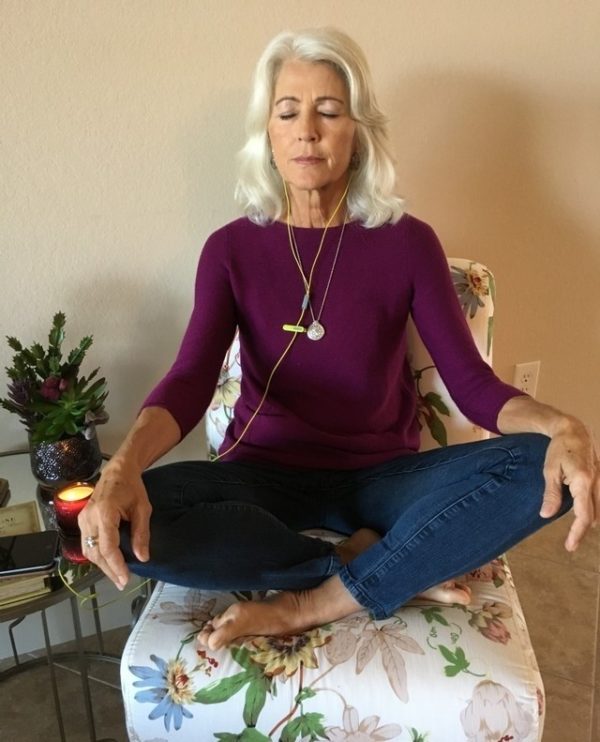A few weeks ago I discussed the physical and mental benefits that go along with “turning on” the Relaxation Response and offered some tips on how to elicit this healing response within you. If you have not read that blog post yet, you can check it out HERE. [1]
But what about when a person cannot get out of the cycle of stress for long enough to turn on the Relaxation Response, no matter how hard they try?
If this is occurring for you, you may be suffering from PTSD (Post Traumatic Stress Disorder) or Complex PTSD. These are two conditions that are not only affect your mental health but can also have negative effects on your physical body, including raising your risk for cancer.
What Is PTSD?
According to the Post Traumatic Stress Disorder (PTSD) Alliance [2], about 70 percent of the adult population in the United States have experienced at least one traumatic event in their life and approximately 20 percent of these individuals will develop PTSD. The newly-revised Diagnostic and Statistical Manual of Mental Disorders (DSM–5) [3] defines PTSD by eight criteria:
- Exposure to a traumatic event, such as death, violence, serious injury or the threat of these things;
- “Persistently re-experiencing” of the event through such things as thoughts, nightmares, and flashbacks;
- Avoidance of all things associated with the traumatic event, including feelings;
- Negative thoughts and feelings about the event, oneself and the world in general;
- Feelings of extreme isolation;
- Changes in overall mood and behavior, including being overly aggressive, having difficulty sleeping, having difficulty concentrating and self-destructive behavior;
- Symptoms that persist for more than 1 month;
- Symptoms that negatively affect the person’s social, personal and professional life;
- Symptoms that cannot be traced strictly to medication, substance abuse or other kinds of illness.
Those that suffer from Complex PTSD often have these above behaviors, but they may be more severe. This is because Complex PTSD can result from traumatic events that last for a long period of time, such as child abuse or war.
The PTSD- Cancer Connection
When trauma goes unhealed for years, the body system will exist in a constant state of heightened stress. A recent meta-analysis [4] of over one hundred other studies published in the journal Nature founds that the sympathetic nervous system, and especially the hormone adrenaline and corresponding noradrenaline-stimulating mechanisms, can actually alter genetic codes when under chronic acute stress. The result is a cascade of changes to the immune system:
-a reduction in the cytotoxic effect of Natural Killer cells [5];
-inhibiting of cancer apoptosis;
-inhibiting DNA repair;
– the stimulation of cancer cell angiogenesis [6];
-the activation of a process called “epithelial-mesenchymal transition [7],” one of the ways that new cancer stem cells are created;
– increased inflammation;
3 Things You Can Do to Heal from PTSD
The good news is that experts agree that PTSD can be treated successfully [2], and in many cases naturally. Here are three tools that can help you on your journey to take back your life if you have PTSD:
#1 Practice Meditation. Studies such as the one conducted by the Operational Stress Injury Clinic [8] in British Columbia have shown that meditation can increase “neuroplasticity,” i.e. the brain’s ability to change,” and this can increase your resilience [9] in the face of life’s challenges. Research has also shown that meditation [8] can reduce activity in the amygdala, which is the part of the brain responsible for fear.
brain’s ability to change,” and this can increase your resilience [9] in the face of life’s challenges. Research has also shown that meditation [8] can reduce activity in the amygdala, which is the part of the brain responsible for fear.
And a modality called “Eye Movement Desensitization and Reprocessing (EMDR)” [10] can be very effective in helping to focus on physical sensations while talking through the trauma with a trained professional.
#2 Get Support. One of the most impressive studies [11] that proves the power of support in overcoming disease was conducted by the University of California, San Francisco in 2006.
In 3,000 nurses with Breast Cancer, those who went through the cancer experience alone were four times more likely to die from the disease than those who had friends supporting them.
#3 Do Some Tapping. Tapping, or EFT, has been shown to help mitigate the symptoms of PTSD in veterans. In a 2013 report published in the Journal of Nervous & Mental Disease [12], researchers from the United States and Canada found that one month after a 6-hour long EFT training, 90% of the veterans no longer met the clinical criteria for PTSD. After 6 months, the percentage was still at 80%.
You CAN Heal from PTSD—And Lower Your Cancer Risk
Remember that PTSD is a reversible condition. There are many natural modalities you can turn to before it becomes a risk factor for dis-ease, including cancer. Leading a healthy breast life must include healing your emotional wounds [13]. If you are ready to take a deep dive into Healing Your Emotional Wounds, take the time to nurture yourself and learn from some of the top doctors and healers in the world at the Surviving & Thriving [14] online program.